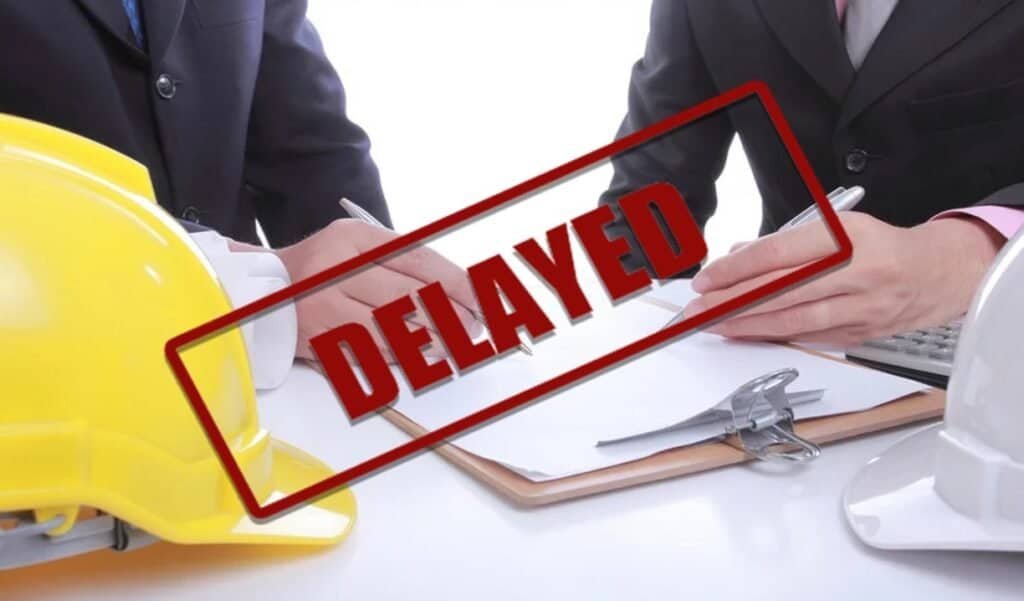Construction sites play a vital role in shaping our modern society, but they often encounter various challenges that can hinder project progress, safety, and success.
In this blog, we will discuss the most common construction site problems and provide practical solutions to address them effectively.
Safety Hazards
Safety is a top priority on construction sites, yet accidents can still occur. Falls from heights, electrical hazards, and improper use of heavy machinery are some of the safety risks faced by workers. To mitigate these hazards, strict safety protocols, training programs, and the use of personal protective equipment (PPE) should be enforced. Regular inspections, safety audits, and the involvement of all stakeholders in promoting a culture of safety are crucial.
High-level edge protection equipment
Delays in Project Timeline
Delays in project timelines can lead to increased costs and client dissatisfaction. Poor planning, unforeseen weather conditions, and material shortages are common causes of delays. To minimize these issues, thorough project planning with realistic timelines, continuous monitoring, and contingency plans are essential. Maintaining a clear line of communication between all parties involved and promptly addressing any issues that arise can help mitigate delays and keep the project on track.

Budget Overruns
Staying within the allocated budget is crucial for project success, but it is not uncommon for construction projects to exceed their budgets. Unexpected expenses, changes in project scope, and inaccurate cost estimation are major contributors to budget overruns. To manage budgets effectively, accurate cost estimation during the planning phase is vital. Regular monitoring and tracking of expenses, proactive identification of potential cost-saving measures, and implementing effective cost controls can help prevent budget overruns.

Poor Communication
Clear and efficient communication among team members and stakeholders is paramount to avoid misunderstandings and errors. Lack of communication can lead to delays, conflicts, and decreased productivity. Open channels of communication, such as regular project meetings, effective project management software, and clearly defined roles and responsibilities, are key. Emphasizing the importance of collaboration and fostering a culture of effective communication can enhance project coordination and success.

Environmental Impact
Construction sites have a significant environmental impact, including waste generation, energy consumption, and pollution. Implementing sustainable practices can mitigate these negative effects. Proper waste management, recycling programs, energy-efficient designs, and utilizing eco-friendly materials are essential steps. Adhering to green building certifications and incorporating environmentally conscious practices into construction processes can minimize the environmental footprint.
Quality Control Issues
Maintaining high-quality standards throughout construction projects is crucial. Poor workmanship, lack of inspections, and inadequate oversight can compromise quality. Regular inspections, quality control checks, and skilled workforce training are paramount. Establishing clear quality standards, utilizing advanced construction techniques, and conducting regular audits can help ensure that projects meet or exceed quality expectations.

Legal and Regulatory Compliance
Non-compliance with building codes, permits, and safety regulations can result in legal consequences and project setbacks. It is essential to keep updated with local regulations and obtain all necessary permits before commencing a project. Regular inspections, adherence to safety guidelines, and proactive measures to address any compliance issues are crucial to minimize legal risks and ensure project continuity.

Workforce Management
The construction industry faces challenges such as skill shortages, high turnover rates, and maintaining a productive workforce. Effective workforce management is vital for project success. Strategies such as attracting and retaining skilled workers, offering training and development programs, and creating a positive work environment can improve workforce stability and productivity.
conclusion
Construction sites encounter various challenges, but with proactive planning, open communication, strict safety measures, and adherence to regulations, these problems can be effectively managed. By prioritizing safety, appropriate budgeting, sustainability, quality control, and maintaining a skilled workforce, construction projects can achieve successful outcomes while minimizing setbacks. Embracing innovative solutions and industry best practices will contribute to the overall improvement of construction site operations.










